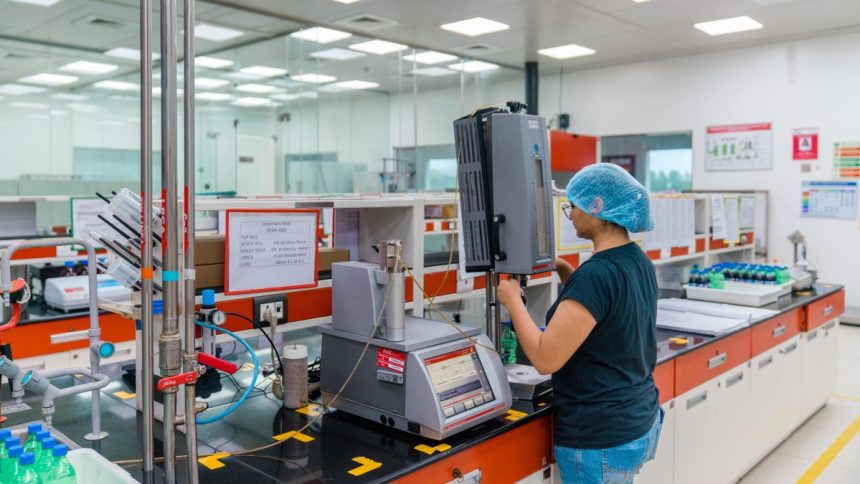The food and beverage industry thrives on consistency, safety, and quality. Consumers expect each product they purchase to meet high standards of taste and safety, while regulatory bodies impose stringent quality control requirements. In this context, precision in manufacturing processes isn’t just beneficial—it’s crucial. This article explores how adopting advanced measurement techniques can significantly enhance quality control in food and beverage production, ensuring products consistently meet predetermined standards.
The Importance of Accurate Ingredient Measurement
The aim of producing consistent food and beverage products lies in the accuracy of ingredient measurements. Minor discrepancies in ingredient quantities can lead to significant variations in the final product, affecting taste, texture, and compliance with safety standards. Precision in measuring components ensures that each batch adheres to the same quality and safety specifications, reducing waste and increasing consumer trust.
Accurate measurements are especially important when it comes to additives and flavorings, which are often required in very specific, small quantities. Advanced scales and digital measuring tools can reduce human error and ensure that each component is added in the correct amount. By maintaining strict measurement protocols, manufacturers can avoid costly recalls and maintain a strong brand reputation.
Enhanced Monitoring Techniques
Implementing sophisticated monitoring systems is another critical aspect of improving quality control. These systems track the conditions and processes throughout production, from raw material intake to final packaging. Real-time monitoring helps identify deviations from standard procedures immediately, allowing for quick corrections that prevent a minor issue from becoming a major failure.
For instance, temperature sensors and humidity monitors in storage and production areas ensure that the environment remains within safe parameters, which is particularly important for perishable goods. By using these technologies, manufacturers can guarantee that their products are produced in optimal conditions, enhancing safety and quality.
The Role of Titration in Ensuring Product Quality
Titration is a chemical analysis method essential for achieving precise formulations in the food and beverage industry. It involves measuring the quantity of a reagent needed to complete a desired chemical reaction in a solution. Accurate titration ensures that pH levels, sweetness, acidity, and preservative concentrations are within specified limits, which is crucial for product safety and quality. For more information on how titration can be integrated into your quality control processes, visit Metrohm.
The application of titration extends beyond simple compliance. It helps manufacturers fine-tune recipes for optimal flavor and stability, ensuring consumer satisfaction and adherence to regulations. Moreover, consistent titration practices contribute to sustainability by reducing waste and ensuring efficient use of ingredients.
Automation in Quality Control
Automation plays a transformative role in modernizing quality control systems within the food and beverage industry. Automated equipment and processes reduce the likelihood of human error and increase the efficiency of production lines. Machines can perform repetitive tasks with high precision and at speeds unattainable by human workers, allowing for more consistent output.
For example, automated filling systems ensure that each container has the exact amount of product, minimizing overfills and underfills. This not only helps in adhering to legal standards but also in maintaining consumer trust. Additionally, automation can streamline the data collection process, providing more accurate and comprehensive data for quality assurance purposes.
Advancements in Spectroscopy for Quality Assessment
Spectroscopy is another powerful technique that has revolutionized quality control in food and beverage manufacturing. This method uses light to analyze the composition of ingredients and products, providing detailed information about chemical makeup without the need for direct contact or destruction of the sample. This non-invasive approach allows for continuous monitoring of production lines, ensuring that the quality remains high from start to finish.
The Advantages of Non-Invasive Testing
Non-invasive spectroscopic techniques offer several advantages over traditional testing methods. By eliminating the need for physical sample extraction, manufacturers can reduce waste and prevent contamination risks. This method also speeds up the testing process, as results are almost instantaneous, allowing for quicker adjustments to the production process if needed.
Real-time spectroscopy can detect variations in color, moisture content, and ingredient mixtures, which are critical for maintaining product consistency. For instance, in beverage production, slight deviations in color or clarity can indicate issues with ingredient solubility or unwanted chemical reactions during processing.
Integration of Spectroscopy with IoT Devices
The integration of spectroscopic equipment with Internet of Things (IoT) devices further enhances quality control measures. IoT devices can collect and transmit data from spectroscopic analysis to central systems where it can be evaluated in real time. This connectivity enables a proactive approach to quality management, where potential issues are identified and addressed before they affect the final product.
IoT-enabled spectroscopy not only maintains product standards but also enhances operational efficiency. By automating data collection and analysis, manufacturers can better allocate human resources to areas where they are needed most, such as product development and customer service.
Data Analytics for Predictive Quality Control
Data analytics plays a crucial role in translating the vast amounts of information collected through advanced measurement techniques into actionable insights. By applying machine learning algorithms to historical and real-time data, manufacturers can predict potential quality issues before they occur.
Predictive analytics can identify patterns that lead to defects or deviations, allowing manufacturers to fine-tune their processes to prevent these issues in future batches. This proactive approach not only saves resources by reducing waste but also enhances the brand’s reputation for quality and reliability.
Moreover, data-driven quality control adapts over time, learning from each production cycle. This continuous improvement process ensures that quality control measures become more effective and efficient, driving down costs and improving product consistency.
Leveraging Robotic Automation for Precision
Robotic automation is increasingly being adopted in the food and beverage industry to enhance precision in production processes. Robots equipped with high-resolution cameras and sensors can perform detailed inspections of products at various stages of manufacturing. This ensures that only products meeting strict quality standards reach the consumer.
Robots are particularly useful in environments that require high levels of cleanliness and precision, such as dairy and meat processing. They can operate in controlled environments, minimizing human contact and the risk of contamination. Additionally, robots can handle delicate operations, such as the precise placement of ingredients or the intricate assembly of gourmet products, with consistency and accuracy.
Lynn Martelli is an editor at Readability. She received her MFA in Creative Writing from Antioch University and has worked as an editor for over 10 years. Lynn has edited a wide variety of books, including fiction, non-fiction, memoirs, and more. In her free time, Lynn enjoys reading, writing, and spending time with her family and friends.















